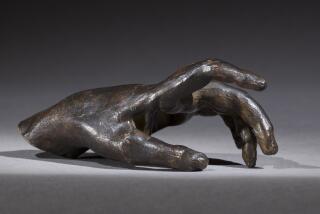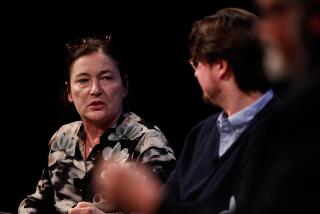Sophie Calle takes names in âThe Address Bookâ
Itâs fascinating to read the French conceptual artist Sophie Calleâs âThe Address Bookâ in the age of social media. The project, originally published as a serial in the newspaper LibĂŠration between Aug. 2 and Sept. 4, 1983 â and translated into English now for the first time â grew out of the most random of occurrences: an address book that Calle found on a Paris street.
Calle returned the address book to its owner, a man she identifies as Pierre D., but not before she photocopied its pages so she could contact all his contacts, as it were. The result is an impressionistic portrait, as much about the process of looking for Pierre as it is about Pierre himself, and a provocative inquiry into privacy, identity, intimacy and the borders we construct around ourselves. (When Pierre discovered the serialized publication in LibĂŠration, he demanded that the paper publish a nude photo of Calle as recompense.)
For those who donât know her, Calle has long sought to blur the boundaries. At the urging of Paul Auster â who based a character on her in his 1992 novel âLeviathanâ â she once turned a lower Manhattan phone booth into an interactive installation, placing cigarettes, water, pads of paper and other materials there to see the reaction they would get.
âThe Address Bookâ operates in similar fashion, looking beneath the surface of the mundane, the everyday, to mine a more elusive reality. The central question, of course, is: âWho is Pierre?â But the thrill of the book is that as Calle works through his acquaintances, she ends up learning as much about herself.
After one friend âreacts violentlyâ to being approached (âIâll have no part in this! Itâs an outrage!â), she wonders at his reaction: âWhy did that man refuse to understand me, to listen to me? I canât take his refusal. I should have explained to him that I donât want to hurt Pierre. Suddenly, I am afraid of what I am doing. Pangs of conscience. But I must continue. I will beg his friends to talk to me.â
Although in the wake of its initial French publication Calle agreed not to reissue âThe Address Bookâ during Pierreâs lifetime, the book feels strikingly contemporary, with its sense of a life constructed out of pieces, interpreted at a distance, through a variety of poses, or façades. Pierre is both not real to us and utterly real to us â a compendium of anecdotes, of images, that provoke our fantasies, even as we confront the violation (of privacy, of discretion) at the projectâs heart.
The same could be said of Facebook or Twitter, where the public display of our address books, our diaries, our relationships â manipulated to create a certain set of impressions â both reveal and conceal us at once.
In Calleâs pursuit of Pierre, then, we get a glimpse of the future that we now inhabit, suspended between reality and the image of reality, between a life and the impression of a life.
âPierre, I have âfollowedâ you, âsearched forâ you, for over a month,â Calle writes at the end of the book, in a statement that could easily function as a post on his (on anybodyâs) Facebook wall. âIf I ran into you on the street, I think I could recognize you, but I would not talk to you. I have met your friends. I have listened to them. I no longer need them. Tonight, I will leave Paris, I could have gone to your native Reims to see your school, your house. I could have tried to join you in Lapland. Instead, I have chosen to buy a train ticket for Rome, where you spend every summer, where you would like to live.â
ALSO:
Love, loss and taxidermy in Lydia Milletâs âMagnificenceâ
Bad Sex in Fiction finalists: Tom Wolfe yes, J.K. Rowling no
Oliver Sacks discusses his new book âHallucinationsâ and more
More to Read
Sign up for our Book Club newsletter
Get the latest news, events and more from the Los Angeles Times Book Club, and help us get L.A. reading and talking.
You may occasionally receive promotional content from the Los Angeles Times.








